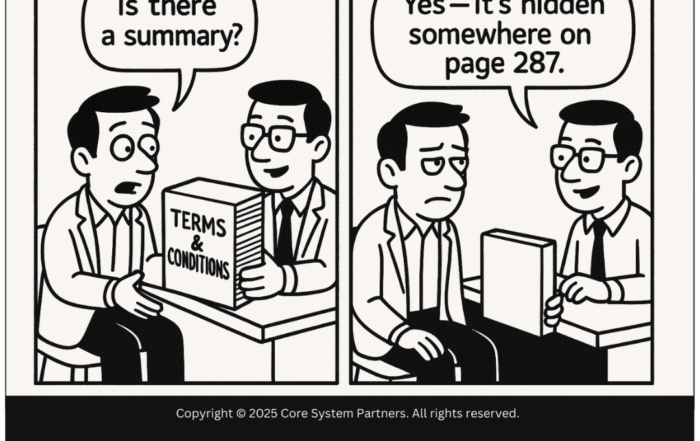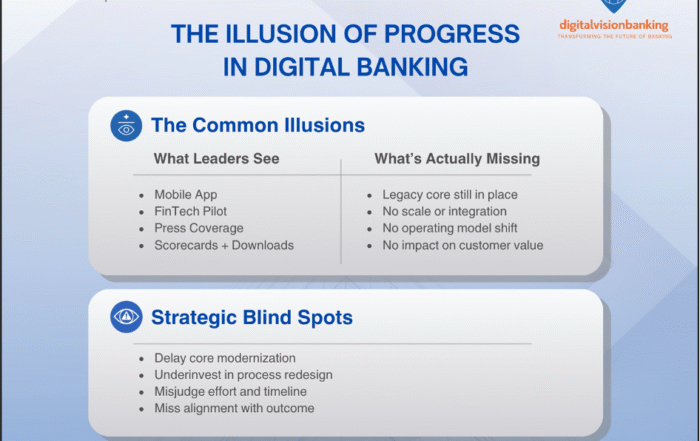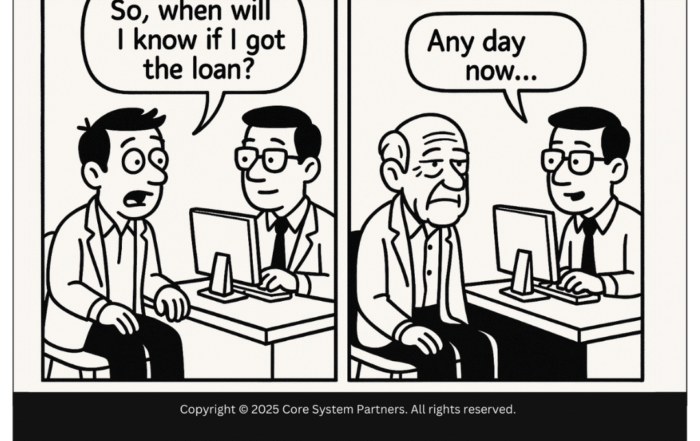
Emphasizing the importance of continuous monitoring and KPI tracking throughout core banking modernization to ensure alignment, manage risks, and secure long-term benefits.
Implementing sweeping modernization initiatives as extensive as enterprise-wide core system overhauls is a multi-phase process spanning years. From initial planning through post-launch optimization, continuous monitoring provides invaluable visibility enabling teams to:
- Gauge progress toward milestones
- Identify emerging risks
- Uncover hidden bottlenecks
- Reconfirm stakeholder alignment
- Adjust strategies as transformations evolve
Establishing clear metrics and cadences for tracking key performance indicators (KPIs) throughout lengthy core banking modernization efforts is crucial for organizational alignment, risk mitigation and benefit realization.
Ongoing Initiative Health Monitoring
As core banking transformation leaders can attest, no initiative this expansive unfolds exactly as envisioned on paper. Assumptions get challenged. Unknown dependencies surface. New obstacles or opportunities emerge. Market dynamics shift.
Rather than fruitlessly attempting to predict every potential contingency at the outset, build regular pulse checks into the game plan to catch deviations quickly. This allows for dynamic course corrections to keep transformational efforts aligned to North Star objectives.
What to Track?
- Critical areas for consistent monitoring include:
- Overall timeline adherence
- Budget actuals vs projections
- Resource allocation and burn rates
- Milestone completion rates
- Risk exposure levels
- Stakeholder sentiment sampling
- Process and technology performance benchmarks
How Frequently?
Tracking frequencies should align with governance cadences. Depending on organizational cycles, that might entail weekly stats reviews, monthly steering committee updates, or quarterly executive progress briefings.
Supplement standing forums as needed with impromptu reviews to address red flags surfaced by monitoring mechanisms.
Centralized Reporting
Consolidate pertinent metrics into user-friendly dashboards providing one version of the truth. Build visibility across functional owners. Visualizations carry more impact than spreadsheets.
Post Go-Live Value Tracking
Upon launching modernized core banking platforms, the transformation finish line has still not yet been crossed.
Real outcomes manifest in how new solutions perform long after deployment dust settles:
- Are adoption levels meeting expectations?
- What enhancements are most impactful to end users?
- Are quantified benefits being realized according to projections?
Sustaining consistent tracking post-implementation provides crucial signals as to where additional optimization efforts might be beneficial. This helps lock in the transformation’s ROI.
External Industry Benchmarking
While internal KPI dashboards offer self-contained visibility on progress, external industry benchmarking introduces helpful perspective.
Evaluating milestone pacing, budget ratios, enhancement adoption rates and performance metrics relative to peers can affirm your institution is on the right track or signal risks of falling behind the curve.
Leverage industry research firms’ quarterly performance benchmark reports to contextualize transformation KPIs.
Key Takeaway
Monitoring transformation vitals should never cease leading up to, throughout and beyond major modernization initiatives.
Consistent tracking provides invaluable visibility enabling banks to uphold accountability, mitigate risks and lock in benefits from substantial core system investments.
Found this article interesting? Check out these three related reads for more.
- Core banking system implementation challenges and success strategies
- Core banking modernization for continuous innovation
- Core banking transformation metrics Defining success metrics and key performance indicators
#corebankingtransformation #transformationmonitoring





